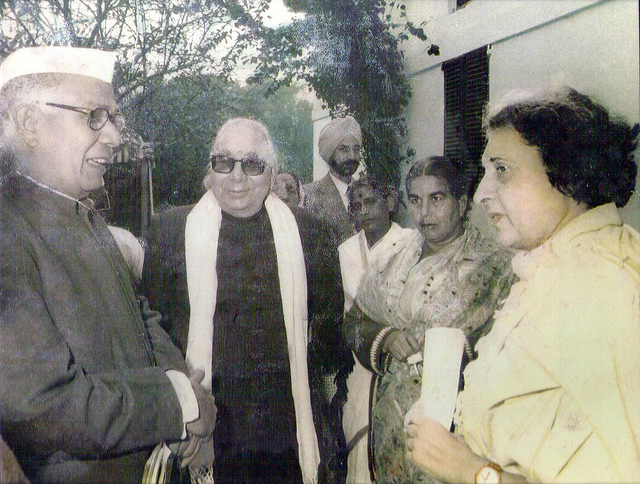Gorakhpur, UTTAR PRADESH :
There is no denying to the fact that 1970-1980 was the best decade for a Bunkar (weaver) of Uttar Pradesh. This period can be identified as the golden era for the handloom industry and the person responsible for this was no other than late Istafa Husain Ansari of Gorakhpur. I am fortunate to be one of his grandsons.
Istafa Husain Ansari (1914-1987) was the third child of Sheikh Murtaza Husain- a Zamindar and a successful businessman, along with a prominent political leader of Gorakhpur. From the very beginning he had nationalist leaning. His initial education was in Gorakhpur and for the higher education he attended Lucknow University, from where he completed his M.Sc. and LLB. During those days the political environment in Lucknow was stirring, and there he worked along with stalwarts Dr. Shankar Dayal Sharma and K Raghurammaiyya, who were prominent student leaders of that time. At an early age he got married to Amina Khatoon, daughter of a prominent businessman of Gorakhpur, Mian Rahmatullah. One of his brothers-in-law, Niamatullah Ansari participated in the freedom struggle, and was later elected as a MLA from Gorakhpur.
After completing his education in Lucknow, he went back to Gorakhpur to practice law in Gorakhpur Civil Court. He was interested in the issues related to small farmers, peasants and the marginalized sections of the society. His contact with Professor Shibban Lal Saxena, who was an influential Congress leader of that time, brought him closer to Maharajganj and Pharenda, from where he started his formal political career by getting elected as the Gram Pradhan of Bhelumpur, which was also known as Karmaura. In 1952, for the first assembly election after independence, he won the Gorakhpur seat on a Congress ticket. He won by a big majority and then again by a bigger majority in 1957.
He was elevated to the position of Parliamentary Secretary for Education, Home and Information, when Sampoorna Nand became the Chief Minister of Uttar Pradesh. Then in 1966 and in 1972, he was elected as a Member of the Legislative Council in Uttar Pradesh Vidhan Parishad. In November 1973, when Chief Minister Hemvati Nandan Bahuguna, formed his eleven member’s cabinet, he was assigned as a Cabinet Minister in-charge of the small scale industries. He saw the deterioration in the politics climate and declined to be a part of that. His refusal to subscribe to the kind of politics brought in by Sanjay Gandhi curtailed his political career, because he could not do the Jee-Hazoori (sycophancy) that became the norm for success those days.
The success story of his life can be gauged by his contribution to the handloom as well as other cottage industries. He battled tirelessly for uplifting the weaker sections of the society. He fought relentlessly for the cause of the weavers and led an agitation against the ruling congress party, of which he was an active member, without fearing for the consequences and his own political future. As a result of the struggle, all his demands were met, and for the first time the woes of the handloom industry caught the attention of the policy makers. As a result, in 1970s when Prime Minister Indira Gandhi formulated her twenty point development program, challenges facing the handloom industry were also included in it. Then came the golden period of the handloom industry where infra-structure was developed to provide the raw material as well as avenues were opened to find markets for the finished product.
Apart from political appointments, he was also a member of the Aligarh Muslim University and Agra University courts. Locally in Gorakhpur, he was in the Executive Committee of Gorakhpur University, and was the founder member of Madan Mohan Malviya Engineering College. For life, he was the President of the school named after his father, Sheikh Murtaza Husain Memorial Higher Secondary School. During the time of his death in 1987, he was the member of Uttar Pradesh Minorities Commission.
It is not out of place to mention that in spite of being in public life for about five decades he maintained an unblemished record. His eldest son, Ashfaq Husain ventured into politics, and was elected to the Lok Sabha from Maharajganj. It is not out of place to mention that he was a great advocate for education and encouraged his descendants for quality education. As a result, today all twenty-two of his grandchildren are either engineers or have achieved post graduate degrees.
(The author is a Nuclear Engineer and was in the United States for long, but presently is in India. Can be contacted at www.tanvirsalim.com.)
source: http://www.twocircles.net / TwoCircles.net / Home / by Tanvir Salim / October 26th, 2013









